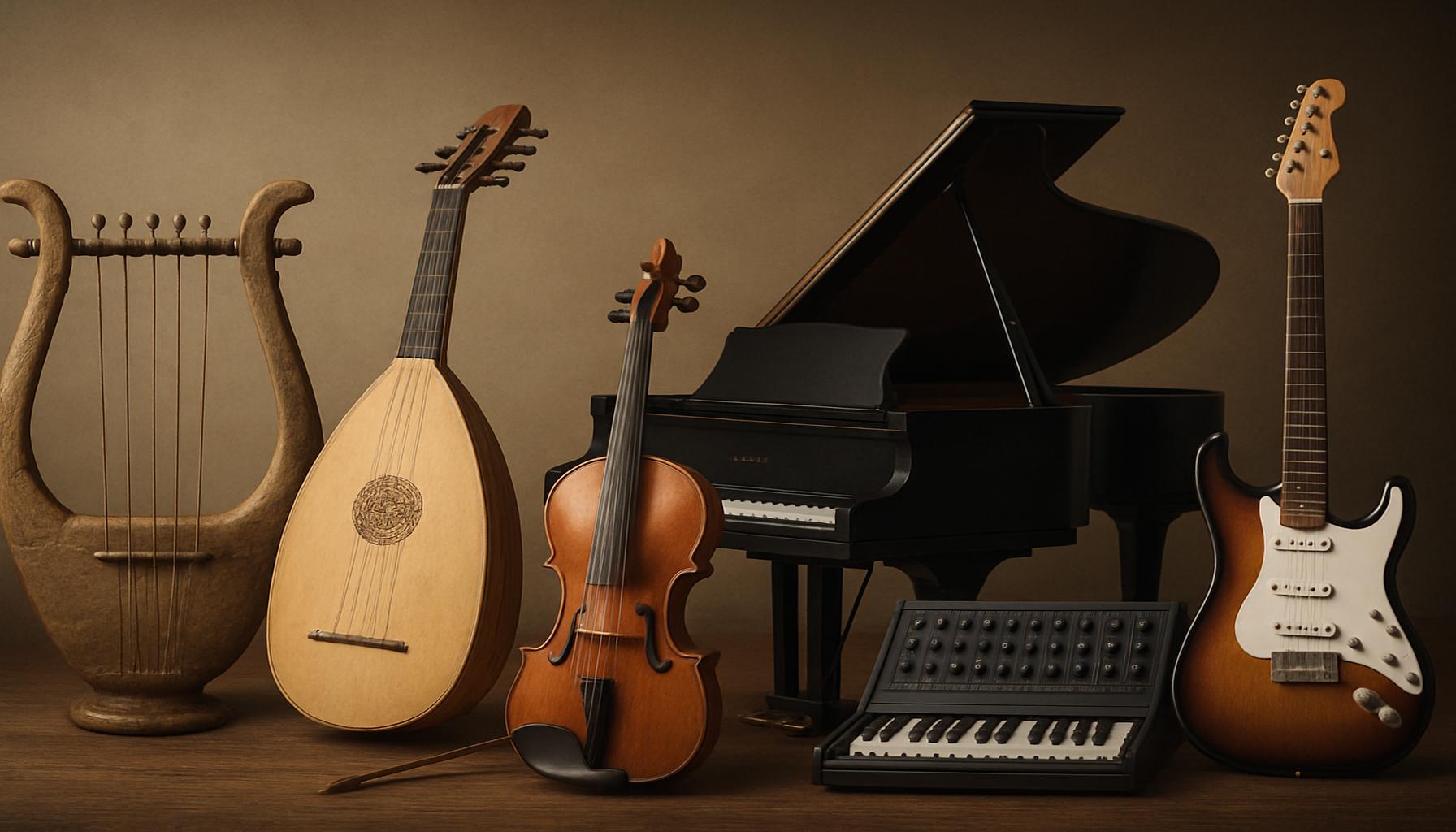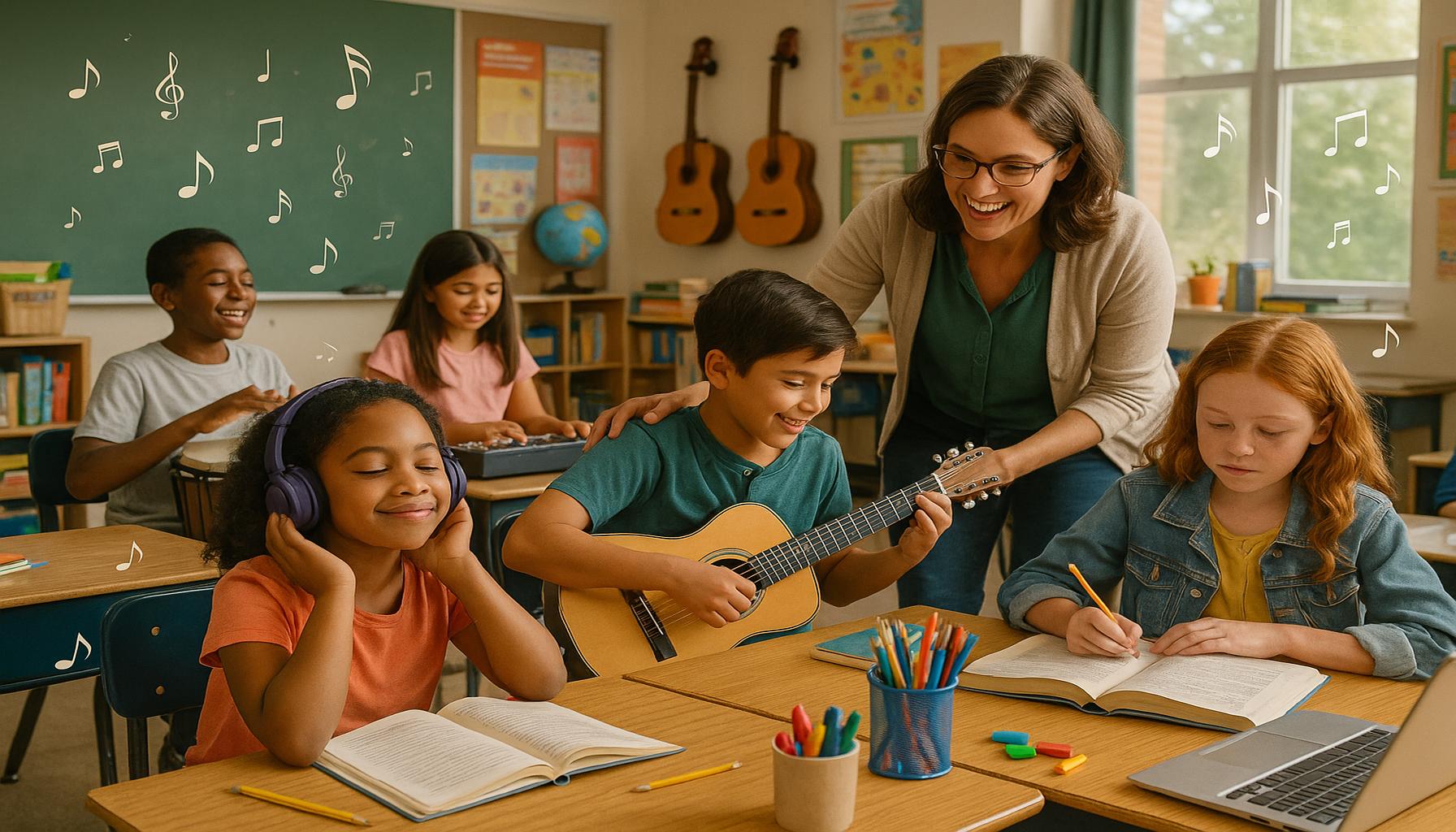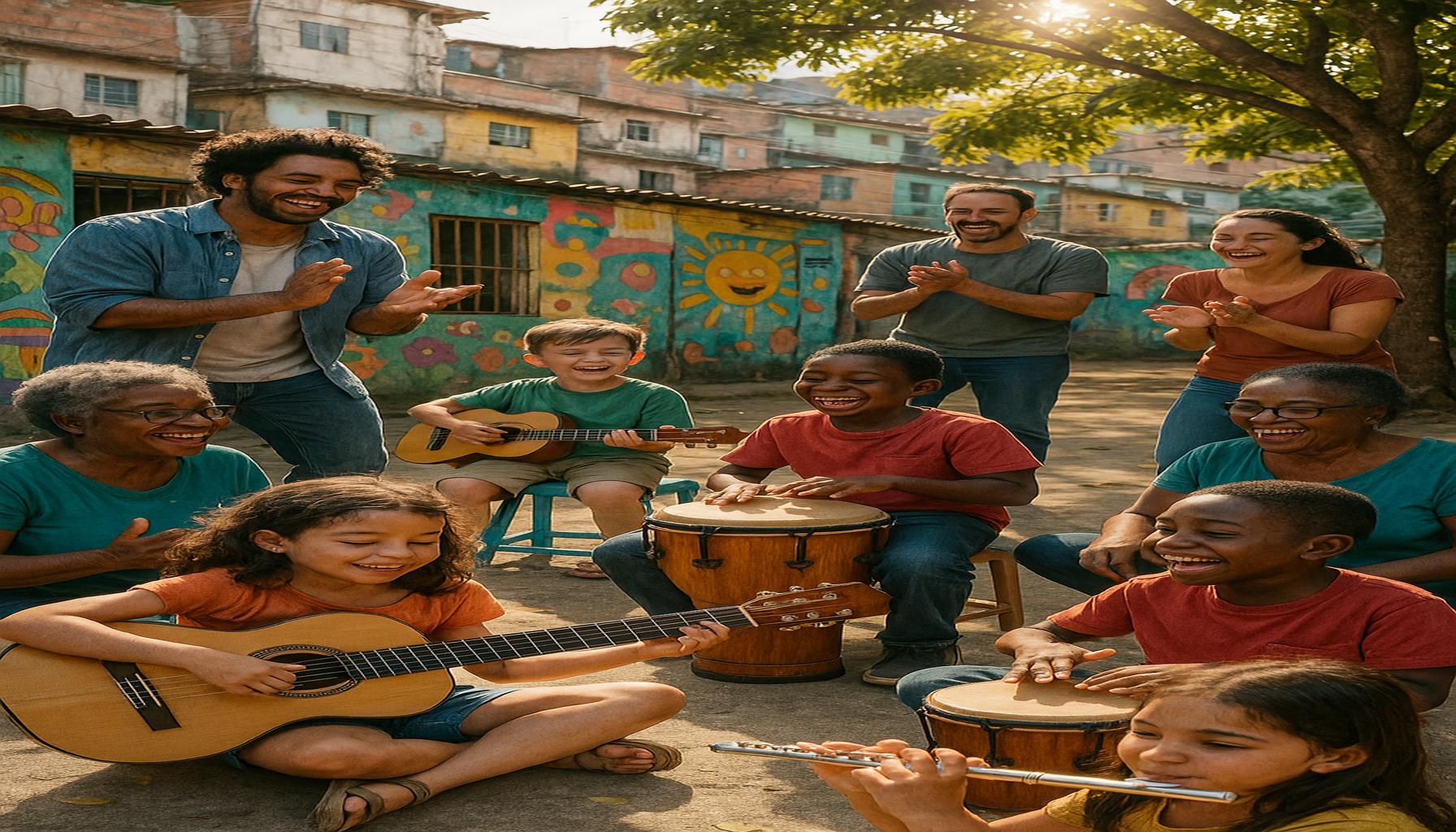Exploring the Intersection of Music and Technology: The Future of Music Creation
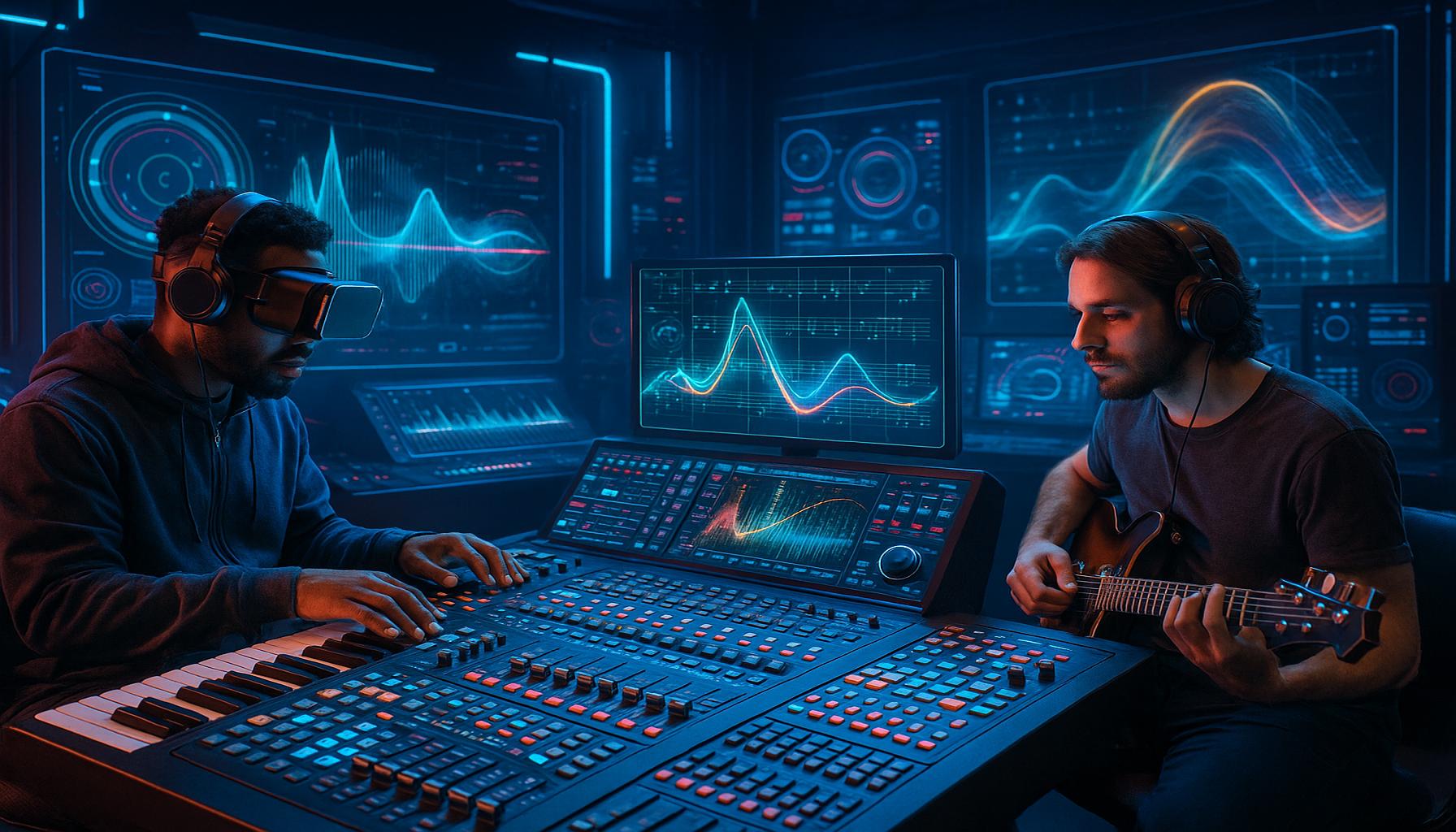
Discovering New Horizons in Sound
The landscape of music creation has transformed dramatically over the past few decades, driven by rapid advances in technology. As we delve into this dynamic intersection, exciting possibilities emerge for artists and producers alike. The ways in which we compose, record, and distribute music are rife with innovation, enabling musicians to push boundaries and experiment like never before.
Key Trends Shaping the Future
Several trends stand out in the evolution of music technology, each contributing significantly to the way music is created and consumed:
- Artificial Intelligence: AI is revolutionizing the creative process, enabling musicians to explore new compositions. For instance, tools like OpenAI’s Jukedeck and Amper Music allow artists to generate musical tracks by simply inputting parameters such as genre and mood. This allows musicians not only to enhance their creative workflow but also to explore genres they may have never considered before.
- Digital Audio Workstations (DAWs): Software like Ableton Live and Logic Pro has made producing music more accessible than ever. These platforms offer user-friendly interfaces, integrated virtual instruments, and powerful editing features that empower both amateur and professional musicians. They enable artists to layer sounds, tweak arrangements, and apply effects, all from their computers at home.
- Streaming Services: Platforms like Spotify and Apple Music have reshaped the music distribution model, emphasizing algorithms and personalized experiences. These services not only provide vast libraries of songs but also curate playlists based on listeners’ preferences, making discovery easier. This allows artists to reach wider audiences, sometimes even achieving viral success overnight.
These technologies are not just tools; they’re redefining what creativity means in the music world. The potential for collaboration is unprecedented, allowing artists to connect globally and experiment with sounds that go beyond traditional boundaries. Musicians can share a workspace in real-time, exchanging ideas and tracks regardless of their physical locations.
The Artist’s Perspective
For musicians, the incorporation of tech can lead to:
- Enhanced productivity: Streamlined processes mean more time for creativity. With immediate access to sound libraries, effects, and collaboration tools, artists can focus less on the logistics of music production and more on crafting unique pieces.
- Global reach: Artists can share their work with audiences worldwide instantly. The rise of social media platforms such as TikTok and Instagram has provided an additional layer for musicians to promote their work, connecting with fans in a personal and engaging manner.
- Innovative collaboration: Remote collaborations break geographical barriers. Platforms like Splice and Soundtrap allow musicians to share their sound files and work together in real-time, regardless of where they are located, thus fostering diverse musical styles and techniques.
As we explore this fascinating era, one thing is clear: the fusion of music and technology is not merely a trend; it’s the future of music creation itself. This confluence invites musicians, producers, and listeners to engage with the music-making process in fresh and exciting ways. Join us on this journey of discovery as we uncover the excitement of what lies ahead, driving the next wave of musical innovation.
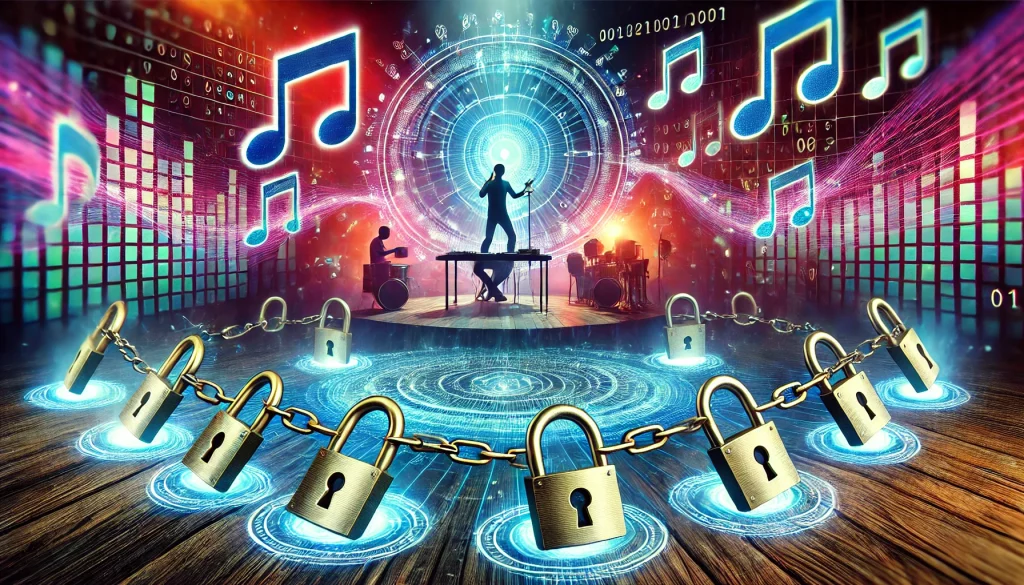
DISCOVER MORE: Click here to enhance your culinary artistry
Embracing Innovation in Music Creation
As technology continues to advance at a breakneck pace, the music industry finds itself at a crossroads where creativity and innovation intersect. The blend of traditional artistry with digital innovations is reshaping how music is not only created but also experienced and shared. This thrilling evolution is characterized by a shift in tools, techniques, and overall approaches to music production. As artists adapt to this new landscape, they unlock opportunities that were previously unimaginable.
Revolutionary Tools for Musicians
At the forefront of this shift are the revolutionary tools that define modern music creation. Here are some key technological innovations that are changing the way artists make music:
- Music Production Apps: The rise of mobile applications, such as GarageBand and FL Studio Mobile, has democratized music production. Musicians can now compose, mix, and share songs right from their smartphones or tablets, making it easier for anyone to engage in the music-making process.
- Virtual Reality (VR) and Augmented Reality (AR): The incorporation of VR and AR technology in music is redefining live experiences. Artists can engage with fans in immersive environments, creating concerts that transcend traditional boundaries. For example, VR concerts allow fans to attend live performances without geographical limitations, opening up new revenue streams for artists.
- Interactive Music Technologies: Tools that allow listeners to interact with music, such as apps that let fans remix tracks or change instrumentation, are gaining traction. These platforms create a more engaged listener base, making them part of the creative process while enriching their relationship with the artist.
These tools don’t merely serve functional purposes—they enhance the artist’s creative expression, enabling them to explore sounds and styles they may not have considered before. The emergence of accessible software has encouraged experimentation, ultimately ushering in a new wave of music that defies categorization.
Changing Dynamics of Collaboration
Collaboration has taken on a new form in the digital age, breaking down the barriers of distance that once hindered creative partnerships. Artists can now collaborate seamlessly across continents, utilizing cloud-based platforms and collaborative software. Consider these aspects:
- Global Networking: Musicians can tap into a global network of creatives, resulting in unique blends of cultural influences. This fusion of styles can lead to groundbreaking works that resonate on an international scale.
- Real-time Feedback: Collaborative tools allow musicians to provide and receive immediate feedback, facilitating a more dynamic creative process. This swift interaction can lead to quicker iterations of songs, enhancing the final product.
- Peer Learning: The accessibility of online tutorials and masterclasses from renowned producers and musicians helps artists refine their craft. Learning from established professionals provides invaluable insights that can elevate the quality of their work.
As we navigate this era of transformation, it is evident that the symbiosis of music and technology is substantially enriching the creative landscape. The endless possibilities fostered by emerging technologies not only enable artists to harness their potential but also invite fans to engage in the music-making journey like never before. In the coming sections, we will delve deeper into the implications of these trends and what they mean for the future of music as we know it.
Exploring the Intersection of Music and Technology: The Future of Music Creation
As technology continues to evolve, the music industry finds itself in a dynamic phase where innovation meets creativity. Artists and producers are embracing cutting-edge tools that reshape how music is created, produced, and consumed. The incorporation of artificial intelligence (AI) and machine learning is revolutionizing the songwriting process, allowing musicians to experiment with new sounds and styles. AI-driven software can analyze existing music trends and generate original compositions, pushing the boundaries of human creativity.Moreover, digital audio workstations (DAWs) have transformed how music is recorded and edited. These platforms offer features that were once reserved for high-end studios, enabling independent artists to produce professional-quality music from their homes. The accessibility of digital tools democratizes music creation, allowing aspiring musicians, regardless of their background, to express their ideas without the constraints of traditional recording processes.In addition, the rise of social media and streaming platforms has created new opportunities for artists to showcase their work globally. Platforms like Spotify and SoundCloud not only provide avenues for music distribution but also foster communities where users can share ideas, collaborate, and promote new sounds. This interconnectedness allows for a rich dialogue between artists and fans, enabling a feedback loop that influences the evolution of music genres.To visualize the impact of these advancements, the table below breaks down some key advantages of this innovative synergy between music and technology:
| Category | Description |
|---|---|
| AI-assisted Composition | Enhances creativity by generating new melodies and harmonies based on user input and current music trends. |
| Accessibility of Tools | Reduces barriers for independent musicians, enabling anyone with a computer to produce high-quality music. |
As we delve deeper into this topic, further exploration on the implications of blockchain for music rights and the development of virtual reality concerts may lead to exciting developments in the creator economy and fan engagement. Understanding these trends will unveil the future landscape of music creation, making it crucial for aspiring artists and industry veterans alike to remain informed and adaptable.
DISCOVER MORE: Click here to delve into the world of ethnic cuisine
Redefining Music Distribution and Consumption
The metamorphosis of music creation extends beyond the studio into the realms of distribution and consumption. Today’s digital landscape allows artists unprecedented control over how their music reaches listeners, leading to an evolution in marketing strategies and distribution channels. The integration of technology is enabling not just new methods of sharing music but also fostering a closer bond between artists and fans.
Streaming Platforms and Artist Empowerment
The rise of streaming platforms like Spotify, Apple Music, and Tidal has revolutionized how music is accessed. Rather than traditional album sales, artists now leverage streaming as their primary source of revenue. This shift has significant implications:
- Direct Access to Audiences: Musicians can distribute their work widely and immediately, granting fans instant access to their latest releases. This immediacy fosters a direct connection, with artists often engaging with listeners through social media and exclusive content, significantly enhancing fan loyalty.
- Data-Driven Decisions: Streaming platforms provide valuable analytics that artists can use to understand their audience better. Insights into listener demographics and preferences allow musicians to tailor their marketing strategies and live performances, optimizing their impact and reach.
- Creative Control: With fewer intermediaries, artists can maintain greater ownership over their music, choosing how and when they release their work. This newfound freedom empowers independent musicians who may not have the backing of major labels to thrive in an ever-competitive environment.
As artists navigate this new digital hierarchy, the role of the traditional record label is evolving, adapting to support these empowered musicians through innovative approaches to promotion and distribution tailored to the digital age.
Artificial Intelligence and Music Creation
The advent of artificial intelligence (AI) technology is playing a pivotal role in music creation, offering artists new avenues for experimentation and creativity. AI-driven tools can now compose, arrange, and produce music, altering the fabric of creative processes:
- AI Music Composition: Programs like OpenAI’s MuseNet and Google’s Magenta allow artists to generate melodies and harmonies based on their input. This collaboration between artist and algorithm opens the door to unique creative outcomes, challenging traditional expectations of authorship.
- Personalized Music Experiences: Machine learning algorithms analyze listener preferences, creating tailored playlists that adapt to individual tastes. This not only fosters greater engagement with music but also allows artists to connect their work with the right audience based on real-time feedback.
- Enhanced Production Techniques: AI tools can assist in the mixing and mastering process, streamlining production workflows and reducing the time it takes for artists to finalize their work. By automating routine tasks, musicians can focus more on the creative aspects rather than technical limitations.
The incorporation of AI in music creation does raise questions about originality and the role of human emotion in art. However, as technology continues to evolve, it brings forth a thrilling canvas for artists to challenge, enhance, and redefine their creative practices.
The Future is Collaborative
As we look toward the future, the relationship between technology and music creation is likely to become increasingly collaborative. Virtual reality, artificial intelligence, and new distribution channels are not just tools; they represent a shift in how communities of musicians interact and create:
- Shared Virtual Spaces: Collaborative workspaces in VR could facilitate real-time jam sessions, allowing musicians from diverse backgrounds to co-create without geographical limits. This blend of technology with human ingenuity can lead to unprecedented musical amalgamations.
- Online Community Building: Platforms like BandLab and Soundtrap not only foster collaboration but also encourage feedback among musicians. This sense of community allows artists to inspire each other, sparking creative innovations that reflect a collective voice.
- Concept Albums and Interactive Experiences: The future may see the rise of multimedia projects combining visuals with sound, letting listeners experience an album as a narrative journey rather than a collection of songs. This fusion of storytelling and sound can create deeper emotional connections.
As technology continues to advance, its role as not just a facilitator but an integral part of the music-making process is becoming increasingly clear. The exploration of these intersections will only deepen, promising a vibrant future for artists and audiences alike in the world of music creation.
DIVE DEEPER: Click here to uncover the secrets of captivating storytelling
Charting New Horizons in Music Creation
In conclusion, the intersection of music and technology is defining a bold new era for the music industry, one where creativity and innovation flourish unbound by conventional limitations. As we have explored, the transformation of music distribution through streaming platforms and the empowerment of artists with unprecedented control over their work is reshaping not only their careers but also the way fans interact with music.
Moreover, the integration of artificial intelligence into the creative process introduces exciting possibilities, enabling musicians to compose and produce in ways previously unimaginable. This transformative technology encourages collaboration and experimentation, making way for unique sounds that challenge traditional perspectives on authorship and creativity.
Looking ahead, the future of music creation promises to be increasingly collaborative and community-driven. The advent of shared virtual spaces and interactive experiences will allow musicians to unite across distances, amplifying the diversity of artistic expression. As we embrace these advancements, musicians and fans alike will be continuously drawn into a deeper, more immersive relationship with music.
As we stand at the precipice of these exciting changes in music creation and consumption, it’s clear that the synergy between technology and artistry will continue to evolve. This dynamic interplay will not only enrich our musical experiences but will also pave the way for innovative practices that will define the soundscape of tomorrow. The journey has just begun—one filled with endless possibilities for creativity, connection, and discovery.
